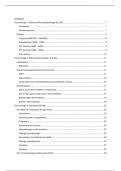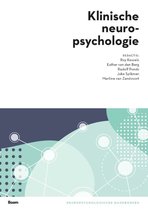Class notes
Aantekeningen Klinische Neuropsychologie deeltentamen 1 - UvA - Psychobiologie
In dit document vind je de uitgebreide aantekeningen van de hoorcolleges.
De Nederlandse colleges hebben Nederlandse aantekeningen en de Engelse colleges hebben Engelse aantekeningen.
[Show more]
Preview 8 out of 126 pages
Uploaded on
September 24, 2024
Number of pages
126
Written in
2024/2025
Type
Class notes
Professor(s)
Erwin van vliet, joe bathelt
Contains
Deeltentamen 1: college 1 t/m 11
dsm
diermodellen
adhd
traumatisch hersenletsel
tbi
down syndroom
fragile x syndroom
williams syndroom
psychofarmacologie
dementie
alzheimer
frontotemporale dementie
lewy body
obesitas
anorexia
hersent
Book Title: Klinische neuropsychologie
Author(s): Unknown
Edition: Unknown ISBN: 9789024444779 Edition: 1
Institution
Universiteit van Amsterdam (UvA)
Education
Psychbiologie
Course
Klinische neuropsychologie (5103KLN12Y)
All documents for this subject (1)
$5.36
100% satisfaction guarantee
Immediately available after payment
Both online and in PDF
No strings attached
Inhoud





